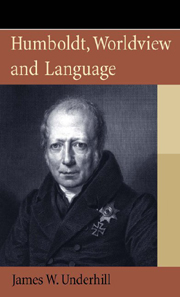Book contents
2 - What Do We Have in Mind When We Talk about Language?
from Part I - Language and World
Published online by Cambridge University Press: 12 September 2012
Summary
‘The case of language,’ Noam Chomsky posited in Language and Mind (1972: ix), ‘is particularly interesting because language plays an essential role in thinking […].’ David Crystal, in The Cambridge Encyclopaedia of Language (1997), does not seem to contest this point: ‘It seems evident that there is the closest of relationships between language and thought: everyday experience suggests that much of our thinking is facilitated by language’ (14).
Crystal goes on to ask an essential question: ‘But is there identity between the two? Is it possible to think without language? Or does our language dictate the ways in which we are able to think?’ In Language, Ideology and Point of View (1993), Paul Simpson adopts the line that language does in fact direct our thinking. Because viewpoints become both consciously and unconsciously encoded, we are influenced into either going along with them or rejecting them. For Simpson, language is anything but a transparent, objective medium of communication: it is a ‘projection of positions and perspectives … a way of communicating attitudes and assumptions' (quoted by Thomas et al. 2004: 32).
There would seem to be some degree of agreement among linguists belonging to diverse schools that thought and language are closely bound up together. If this hypothesis is well founded then it would certainly seem to back up the argument of Stamm and ecolinguists like Hagège and Crystal that a people's worldview is inseparable from the language it speaks.
- Type
- Chapter
- Information
- Humboldt Worldview and Language , pp. 10 - 13Publisher: Edinburgh University PressPrint publication year: 2009

